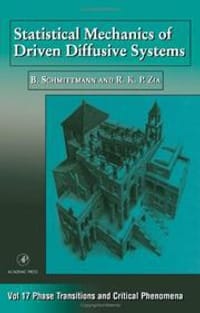Far-from-equilibrium phenomena, while abundant in nature, are not nearly as well understood as their equilibrium counterparts. On the theoretical side, progress is slowed by the lack of a simple framework, such as the Boltzmann-Gibbs paradigm in the case of equilibrium thermodynamics. On the experimental side, the enormous structural complexity of real systems poses serious obstacles to comprehension.
Similar difficulties have been overcome in equilibrium statistical mechanics by focusing on model systems. Even if they seem too simplistic for known physical systems, models give us considerable insight, provided they capture the essential physics. They serve as important theoretical testing grounds where the relationship between the generic physical behavior and the key ingredients of a successful theory can be identified and understood in detail.
Within the vast realm of non-equilibrium physics, driven diffusive systems form a subset with particularly interesting properties. As a prototype model for these systems, the driven lattice gas was introduced roughly a decade ago. Since then, a number of surprising phenomena have been discovered including singular correlations at generic temperatures, as well as novel phase transitions, universality classes, and interfacial instabilities. This book summarizes current knowledge on driven systems, from a pedagogical discussion of the original driven lattice gas to a brief survey of related models. Given that the topic is far from closed, much emphasis is placed on detailing open questions and unsolved problems as an incentive for the reader to pursue the subject further.

